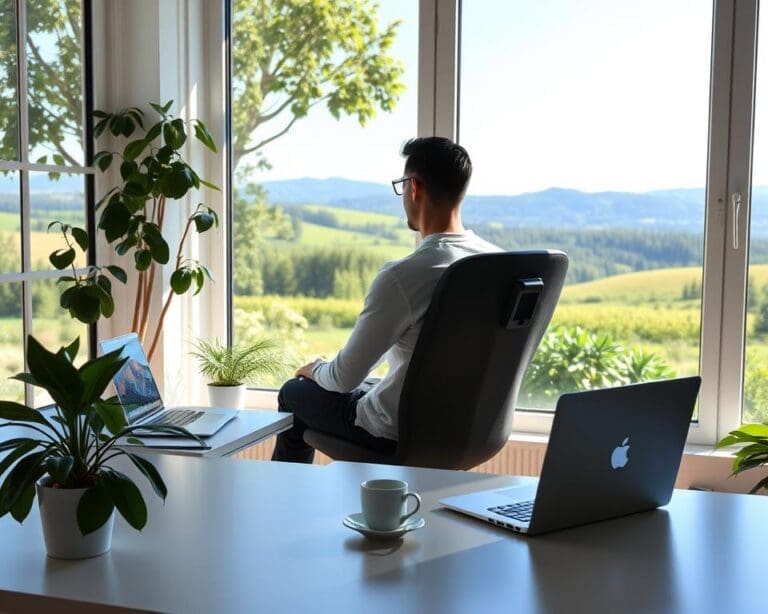In today’s fast-paced world, transforming your home into a relaxing abode is more important than ever. A relaxing home allows you to create a tranquil space where you can unwind and recharge. By integrating thoughtful home decor for relaxation, you can tap into the soothing benefits of a serene living environment. Discovering the elements that contribute to a calming atmosphere is the first step towards crafting your personal sanctuary. In this article, we will explore various strategies that can enhance your home, helping you to achieve the perfect balance of comfort and peace, while utilising insights from experts on how to make your space a true retreat. For further inspiration, check out these bedroom decorating ideas that focus on creating the ultimate cosy retreat.
Create a Relaxing Atmosphere with Lighting
Creating a serene environment in your home hinges significantly on effective lighting choices. Implementing soft lighting techniques transforms ordinary spaces into calming retreats. By strategically layering ambient lighting, task lighting, and accent lighting, you can cultivate a warm and inviting atmosphere that beckons people inside.
Layered Lighting Techniques
Incorporating various light sources, such as floor lamps and table lamps, allows for pockets of light that create zones for relaxation and conversation. Dimmers provide control over brightness, enabling adjustments according to the time of day or mood. Mixing different types of lights — including candles and wall sconces — adds depth and texture, enhancing the overall ambiance. This interplay fosters an inviting space perfect for winding down.
Choosing the Right Bulbs for Serenity
Selecting warm light bulbs with a colour temperature around 2700K evokes a sense of calm. These gentle hues work harmoniously with mood lighting to achieve a soothing glow essential for relaxation. Brands like Philips Hue offer innovative smart options that allow you to adjust brightness and colour seamlessly, enhancing your home’s tranquil atmosphere. For tips on optimising your lighting setup, explore smart lighting ideas that can elevate your serene environments.
Utilise Natural Elements
Incorporating natural elements into home decor can create a serene and calming environment. Indoor plants are one of the most effective ways to bring a touch of nature into your living space. The benefits of plants go beyond mere aesthetics; they actively improve air quality, reduce stress, and uplift one’s mood. Research indicates that having greenery around can enhance concentration, making spaces much more inviting for relaxation or work.
The Benefits of Houseplants
Popular indoor plants such as Snake Plants, Spider Plants, and Peace Lilies are not only beautiful but also low maintenance. These choices ensure fresh air at home while fitting well into various lighting conditions. Integrating these houseplants into your decor can profoundly affect your overall well-being. The soothing appearance of green foliage fosters a sense of tranquillity and contributes to a peaceful atmosphere.
Bringing the Outdoors In
Adopting a biophilic design approach helps bridge the gap between indoor and outdoor living. This style emphasises the connection to nature through natural materials, textures, and views. Using materials like wood, stone, and even water features in your design can create a sense of calm. To enhance the experience, consider placing plants at varying heights, utilising strategies such as vertical gardens. The mindful placement of indoor plants can significantly impact the overall vibe of your home, making it a sanctuary for relaxation. Explore more about this transformative technique in biophilic design here.
How can you make your home feel more relaxing?
Creating a tranquil home design involves an intentional approach that prioritises comfort and serenity. An inviting atmosphere begins with soft furnishings that enhance the overall aesthetic while promoting relaxation. Incorporating calming design elements can transform any space into a soothing sanctuary, making it essential to consider texture and material when designing your home.
Designing a Tranquil Space
The foundation of a relaxing home environment lies in its design. Features such as neutral colours and plush textures contribute to a serene home decor. Choose comfortable fabrics like cotton and linen for upholstery and accessories. These materials not only offer visual appeal but also enhance physical comfort. Warm wood tones, found in furniture or fixtures, can also contribute positively to the ambience, fostering feelings of relaxation and calm. For tips on using wood as a design element, explore this resource on wood elements.
Incorporating Soft Textures and Fabrics
To heighten the tranquil experience, integrate various soft textures throughout your living space. Layering throws and cushions invites users to sink into comfort after a long day. Rugs with gentle weaves can anchor a room while adding warmth underfoot. This approach to decor not only enhances visual interest but creates a tactile environment that is both cosy and luxurious. Aim to create soft arrangements to encourage ease of movement and promote a sense of openness, allowing the space to breathe.
Declutter Your Living Space
In the pursuit of a calm and inviting home, decluttering plays a vital role. Adopting minimalist living encourages individuals to focus on what is truly important while stripping away distractions. A tidy space enhances mental clarity, allowing the mind to relax and recharge. Embracing decluttering can lead to a transformative environment where serenity prevails.
Exploring effective storage solutions can significantly enhance your experience of organising home space. Consider adopting functional furniture pieces that serve multiple purposes. Brands like Muji and IKEA offer innovative storage options designed to maximise efficiency while ensuring your living areas remain clutter-free. These strategies will help create inviting and productive spaces that invite mindfulness and calm.
- Assess items regularly and remove those no longer needed.
- Invest in storage boxes to keep belongings organised.
- Utilise under-bed storage for seasonal items.
- Implement a one-in-one-out policy for new acquisitions.
Ultimately, decluttering not only beautifies physical areas but also contributes to emotional well-being. By embracing these practices, you pave the way for a relaxed and harmonious living environment. Explore more tips for organising your home effectively here.
Create a Personal Sanctuary
Establishing a personal sanctuary within your home is fundamental to nurturing relaxation. By designating specific areas for unwinding, you can create unique relaxation spaces that serve as retreats from daily stressors. A dedicated relaxation area might include a cosy reading nook or a serene meditation corner. These spaces enable you to mentally escape from the chaos of life, fostering a strong sense of peace and tranquillity.
Dedicated Spaces for Relaxation
When creating a sanctuary, consider incorporating elements that resonate with your personal style. Adding a comfortable chair or even a hammock can transform your home retreats into inviting oases. Surround these relaxation spaces with soft textiles like blankets and cushions to enhance comfort while inviting a calming atmosphere. Take inspiration from design ideas that emphasise comfort and personal expression.
Choosing Your Personal Retreat Locations
Selecting the right locations within your home is crucial for effective relaxation. Identify spaces that naturally invite serenity, such as a quiet corner by a window or a dimly lit area in your garden. Personalise these home retreats with decorative plants, art pieces, or mementoes that evoke positive memories. Each dedicated relaxation area should project a sense of calm, promoting a deeper connection to your personal sanctuary and ultimately enriching your overall well-being.
The Soothing Effects of Colour
Colour plays a pivotal role in shaping the atmosphere of a living space. Understanding colour psychology allows us to utilise soothing colours that profoundly affect our mood and well-being. Each hue carries unique emotional implications, setting a serene tone in our homes.
Understanding Colour Psychology
Different colours evoke various feelings and responses. For relaxation, selecting shades like soft blues and muted greens is highly effective. These colours promote a feeling of calm and comfort, creating an inviting atmosphere. Motivated by colour psychology, we can enhance ambience and emotional well-being through thoughtful application.
Best Colours for Relaxation
When considering calming colour schemes, gentle neutrals and pastel shades lead the way. Selections such as soft greys, light beiges, and aquamarine provide a cohesive backdrop for peace and tranquillity. Incorporating paint for relaxation not only transforms walls but can influence decor elements, bringing harmony with curtains, cushions, and decorative pieces. Brands like Farrow & Ball offer a range of wall paints designed to create relaxing environments. For more inspiration on optimal paint choices, explore this resource. The right combination of colours can significantly enhance your home’s comfort level, merging aesthetics with emotional stability.
Incorporate Calming Scents
Integrating calming scents into your home can significantly enhance your living environment, creating a soothing sanctuary for relaxation. The right aromas have the power to transform a space, inviting serenity and tranquillity into your life.
Essential Oils for a Relaxing Home
Essential oils serve as potent elements in aromatherapy, offering various benefits for relaxation. Oils such as lavender, chamomile, and eucalyptus are particularly effective. These oils can be used in diffusers or mixed into bathwater, promoting a serene atmosphere. The delightful scent of lavender, for instance, is renowned for reducing anxiety and encouraging restful sleep, while eucalyptus can invigorate the mind and body, enhancing focus and clarity.
Using Candles and Incense for Ambience
Scented candles and incense are excellent tools for creating a relaxing ambience. The calming scents they release can envelop a room, offering tranquillity and warmth. Brands like Neom Organics and Jo Malone provide exquisite choices that not only smell delightful but also contribute to overall relaxation. Using incense brings additional benefits for relaxation; the act of lighting a stick can serve as a meditative ritual, helping to clear the mind. When combined with calming music or quiet moments, these aromas amplify the peaceful environment you seek.
Embrace Soft Sounds
Creating a peaceful environment is crucial for relaxation, and one pivotal aspect often overlooked is sound. Embracing soft sounds can transform your home into a sanctuary of calm, allowing you to escape the noise of daily life. Consider integrating soothing music, whether it’s instrumental or gentle melodies, to establish a soundscape for relaxation that soothes the mind and body.
Nature sounds also play a vital role in enhancing tranquillity. The gentle rustling of leaves, soft bird calls, or the sound of water flowing can transport you to a serene landscape, making your space feel more grounded and peaceful. Many streaming platforms, like Spotify, offer dedicated playlists filled with calming sounds and nature soundscapes, perfect for unwinding after a long day.
To maximise these auditory elements, consider utilising speakers that seamlessly fill your space with soothing music or the calming chirps of nature. By thoughtfully curating your sound environment, you can significantly elevate the overall atmosphere of your home, reinforcing that much-needed sense of serenity.









